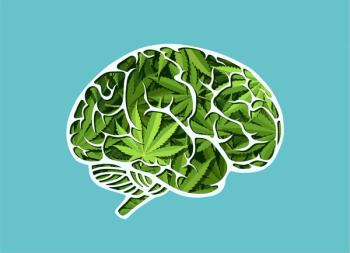
New Israeli Study Discovers Cannabis Terpenes Activate Endocannabinoid Receptors
Key Takeaways
- Cannabis terpenes activate CB1R and CB2R, acting as partial agonists with dose-dependent responses and varying potency and efficacy.
- CB2R activation by terpenes provides protective effects without psychoactivity, offering potential therapeutic benefits.
Study researchers from Israel recently discovered that cannabis terpenes can activate endocannabinoid receptors.
Researchers in Israel explored cannabis plant terpenes. In the study, they discovered that in a dose-dependent manner, that
Study organizers evaluated the modularity ability of 16 terpenes from the cannabis plant which included α-pinene, β-pinene, limonene, myrcene, ocimene, sabinene, terpinolene, borneol, eucalyptol, geraniol, linalool, terpineol, β-caryophyllene, humulene, bisabolol, and nerolidol (1).
“Here we employed the same Xenopus oocytes functional heterologous expression system to complement the CB1R data and to study the activation of the cannabinoid receptor type 2 (CB2R) by sixteen individual cannabis terpenes and by terpene mixtures,” study explained (2). “Employing receptor- induced GIRK currents as a measure for receptor activation, dose-dependent responses were found for many of these terpenes, reaching a maximal response of about 10–60 % the activation elicited by THC. Terpenes’ apparent EC50 at CB1R and CB2R were similar to, or lower than those obtained for THC at the same apparatus, suggesting lower efficacy but equivalent or even improved potency. At CB2R, multiple terpenes reach ‘clinical effect level’ at concentration equivalent or lower than those of THC (≥ 0.1 µM).”
The study established that interactions for cannabinoids such as tetrahydrocannabinol (THC) and cannabidiol (CBD) are “well established” but that terpene interactions are up for discussion (2). Researchers analyzed the dose-response relation over a variety of terpene concentrations at CB1R and CB2R receptors. A previous study from the authors, also published in the journal, Biochemical Pharmacology (3), delved into utilizing the Xenopus oocytes expression system.
Depending on the receptor, terpenes differentiated in their activation level.
“This study provides evidence suggesting that multiple cannabis-derived terpenes, when tested in the absence of cannabinoids, act as partial agonists at CB1R and CB2R, with significant variability in apparent potency, efficacy, and receptor selectivity,” the study’s authors said (1,2). “Collectively, these findings suggest a pharmacological basis for incorporating specific terpenes into ECS-focused product design and warrant further research into their tissue-specific activity, and synergistic potential when used in combination with cannabinoids or other therapeutic agents. The broad availability and favorable safety profiles of many terpenes further support their potential as accessible, scalable, and customizable tools in the modulation of endocannabinoid signaling.”
“Our findings may help reconcile previously inconsistent reports regarding terpene activity at cannabinoid receptors. In doing so, they underscore the utility of GIRK-coupled receptor platforms for characterizing weak but potentially pharmacologically relevant ligands. Furthermore, these results support and complement prior in-vivo observations, suggesting that certain terpene-induced behavioral or therapeutic effects are mediated through cannabinoid receptor activity,” the study’s authors concluded (2). “Importantly, the ability of selected terpenes to activate CB1R and CB2R, suggests that they may contribute independently to cannabis pharmacology and may serve as non-psychotropic ECS modulators in therapeutic applications. This is particularly relevant for CB2R-targeted effects, including anti-inflammatory, neuroprotective, and analgesic responses, where terpene-based interventions may offer advantages over synthetic cannabinoids or THC analogues. Significant activation at low terpene concentrations, co-occurring with plausible improved bioavailability of terpenes, further strengthen their role at the ECS.”
References
- Norml. Cannabis terpenes activate endogenous cannabinoid receptors
https://norml.org/news/2025/11/20/analysis-cannabis-terpenes-act-as-agonists-on-endogenous-cannabinoid-receptors/ (accessed Nov 21, 2025). - Raz, N.; Eyal, A. M.; Fahoum-Khalefa, N.; Tauber, M.; Ben-Chaim, Y. Selective activation of cannabinoid receptors by cannabis terpenes
https://www.sciencedirect.com/science/article/pii/S0006295225007634?via%3Dihub (accessed Nov 21, 2025). - Raz, N.; Eyal, A. M.; Berneman Zeitouni, D.; Hen-Shoval, D.; Davidson, E. M.; Danieli, A.; Tauber, M.; Ben-Chaim, Y. Selected cannabis terpenes synergize with THC to produce increased CB1 receptor activation
https://www.sciencedirect.com/science/article/pii/S0006295223001399 (accessed Nov 21, 2025).
Newsletter
Unlock the latest breakthroughs in cannabis science—subscribe now to get expert insights, research, and industry updates delivered to your inbox.





